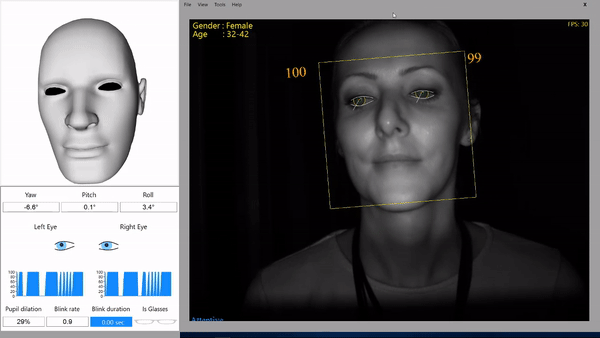From the article on Techcrunch:
The idea of using computer vision and AI to enable cars to drive themselves is well-established, but how about using similar technology to keep an eye on a human driver instead of the road? That’s the thinking behind Tel Aviv-based EyeSight, which has developed an in-car “AI vision” system that claims to be able to detect when a driver loses concentration or gets dangerously distracted.
Using advanced facial processing, it tracks a driver’s gaze direction, pupil dilation, eye openness and head position and uses proprietary algorithms to determine attentiveness. The resulting “smart car” can either do something to alert the driver (e.g. sounds and vibrations) or potentially temporarily activate self-driving mode. So far, so clever.

However, in terms of the business case for selling EyeSight’s tech into car manufacturers, there are two other noteworthy dynamics at play. The European New Car Assessment Program (Euro NCAP), a voluntary vehicle safety rating system backed by the European Union, will require new car models to have Driver Monitoring Systems (DMS) by 2020. Cars released after this point without DMS won’t be able to achieve a five-star safety rating.
This is also where autonomous vehicles comes into focus, too. It is well accepted that in the interim stages before we reach level 5 or full autonomy, semi autonomous driving technology that goes well beyond cruise control will become more and more commonplace. This sees AI and computer vision take over various driving functions, but still requires human assistance, intervention and responsibility. However, some argue that this stage is potentially more dangerous than either human driving or fully autonomous vehicles as there is a much higher risk that a human will lose concentration or stop paying enough attention to remain safe.
“DMS is even more important for semi-autonomous vehicles, which have some self-driving features. The autonomous system must be sure that a driver is alert and awake before it hands over control of a moving car to a human,” notes EyeSight.
Click here to read the full article.